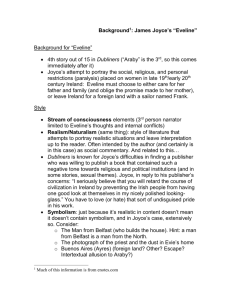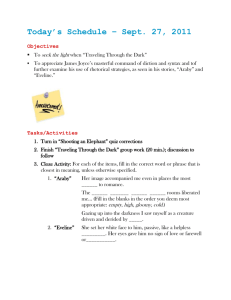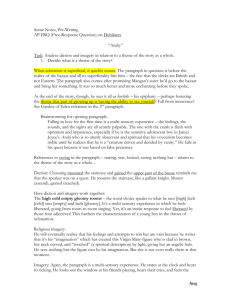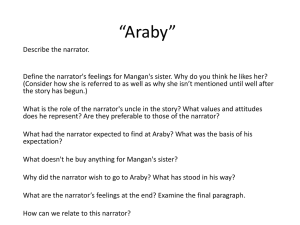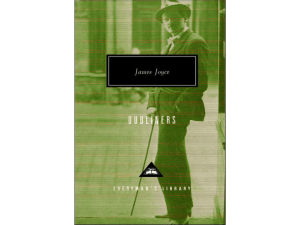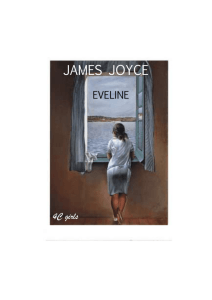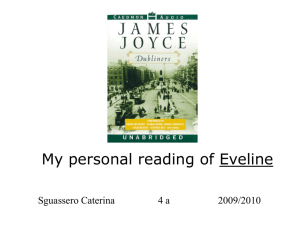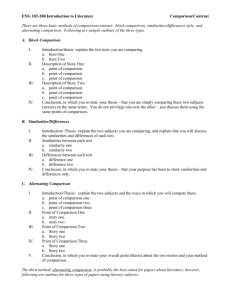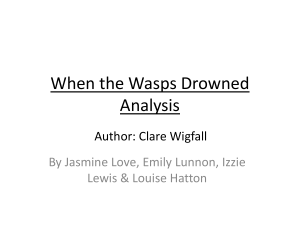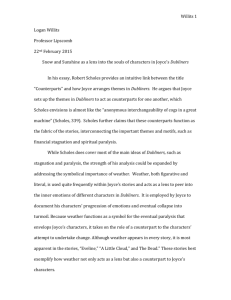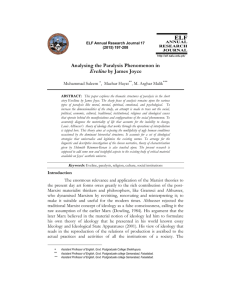Eveline Essay Student Sample.doc
advertisement
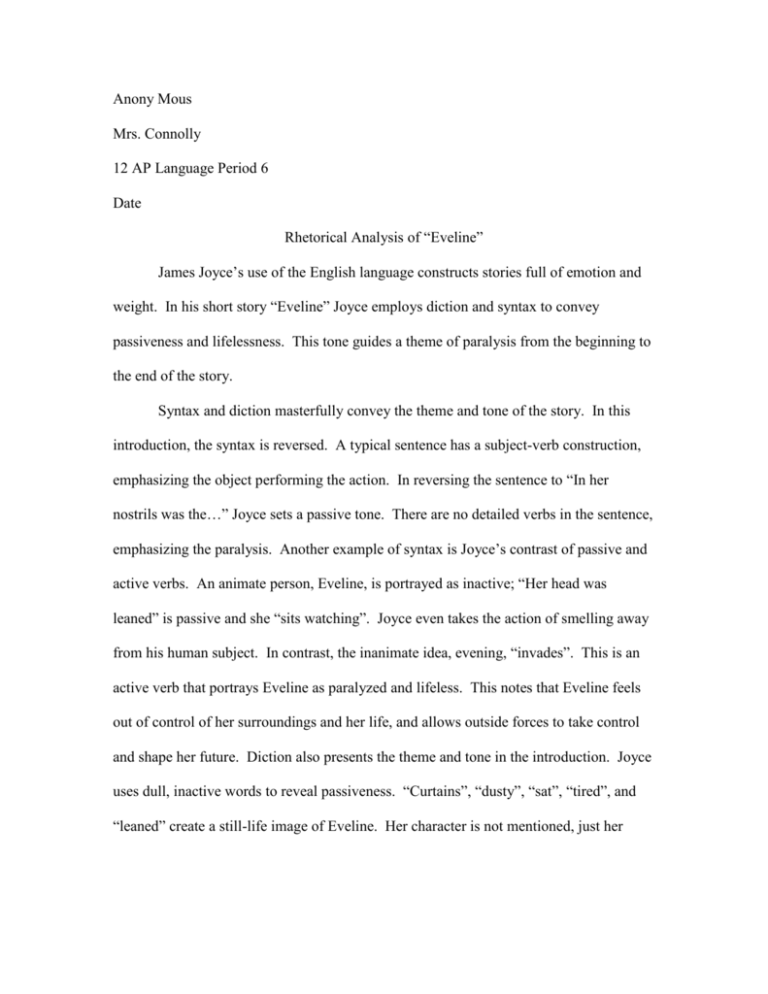
Anony Mous Mrs. Connolly 12 AP Language Period 6 Date Rhetorical Analysis of “Eveline” James Joyce’s use of the English language constructs stories full of emotion and weight. In his short story “Eveline” Joyce employs diction and syntax to convey passiveness and lifelessness. This tone guides a theme of paralysis from the beginning to the end of the story. Syntax and diction masterfully convey the theme and tone of the story. In this introduction, the syntax is reversed. A typical sentence has a subject-verb construction, emphasizing the object performing the action. In reversing the sentence to “In her nostrils was the…” Joyce sets a passive tone. There are no detailed verbs in the sentence, emphasizing the paralysis. Another example of syntax is Joyce’s contrast of passive and active verbs. An animate person, Eveline, is portrayed as inactive; “Her head was leaned” is passive and she “sits watching”. Joyce even takes the action of smelling away from his human subject. In contrast, the inanimate idea, evening, “invades”. This is an active verb that portrays Eveline as paralyzed and lifeless. This notes that Eveline feels out of control of her surroundings and her life, and allows outside forces to take control and shape her future. Diction also presents the theme and tone in the introduction. Joyce uses dull, inactive words to reveal passiveness. “Curtains”, “dusty”, “sat”, “tired”, and “leaned” create a still-life image of Eveline. Her character is not mentioned, just her action, which serves to illuminate her lifelessness. Contrasting passive and active verbs and eliminating strong verbs and characterization are effective uses of syntax by Joyce. Similar construction builds the closing. Active and passive verbs contrast with each other. Frank is portrayed as very animated and active; “he rushed”, “called to her”, and “was shouted at”. These hurried verbs give life to contrast the lifeless Eveline. Passive voice expresses her actions; “she set her white face” and “her eyes gave no sign…” reflect inaction. The use of polysnydeton also removes lifelike qualities from Eveline by connecting love, farewell, and recognition in such order. Deep human emotions-love-lovers to casual emotions-farewell- to the near animalistic emotionrecognition, Joyce effectively conveys lifelessness. By connecting these words with the conjunction “or” instead of a comma, the sentence must be purposefully slowed down to emphasize the emotions. The diction in the closing also presents the theme and tone of the story. Eveline’s passiveness expresses itself not only by stating “passive”, but through terms like “white face”, “helpless animal”, “barrier”, and “follow”. These terms collectively form a lifeless and submissive Eveline. She controls nothing and is unresponsive to any stimulus. The theme of lifelessness and paralysis is tied into the opening. James Joyce’s manipulation of diction and syntax builds a strong theme and tone which connects it from beginning to closing. “Eveline” is a lifeless character paralyzed by their surroundings.
